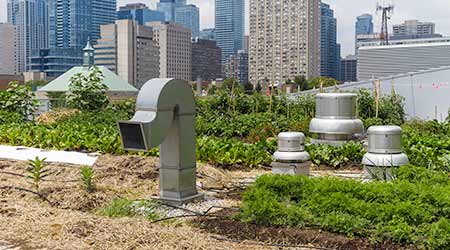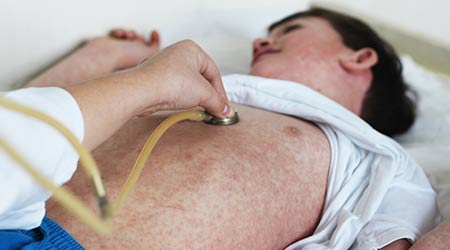
Green Roofs Help Scrub Ozone Out of Indoor Air
May 8, 2019
Green roofs have a moderate effect in reducing ozone intake into buildings, according to a pilot study from Portland State University, potentially improving indoor air quality.
Over two days, university researchers sampled ozone levels at a large retail store in Portland. Part of the roof is vegetated and part is white membrane. The air drawn in by the intake vents over the vegetated segment of the roof had a slightly lower ozone content than that drawn over the membrane section, according to the research abstract published in the March 15 edition of Building and Environment.
Researchers theorize that the ozone reduction was due to a process called dry deposition, where particles in the air deposit themselves on solid surfaces. They further theorize that larger dense expenses of vegetated roof, with intensive plantings which feature taller plant heights, could help further improve the ozone removal rate, but long-term research would be necessary to substantiate that relationship, as well as see if there is any effect on removal rates of other pollutants.
Other already known positive effects of vegetative roofs include stormwater management, reduction of urban heat island effect, and lower temperatures on the roof, as well as providing biophilic benefits for those with views onto the vegetated roof.
Naomi Millán is senior editor of Building Operating Management.
Next
Read next on FacilitiesNet












